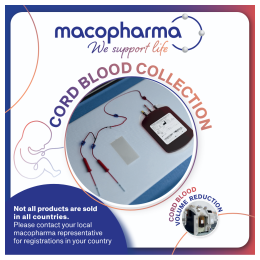You are here
Hemafund & Pluri Prepare for Radiation Emergency
Chernobyl Lessons Learned
The “largest anthropogenic disaster in the history of mankind” took place on 26 April, 19861,2. That was the day that a nuclear reactor in Chernobyl had a meltdown and exploded, releasing radioactive particles into the atmosphere that later fell out over a wide swath of Eastern Europe. Chernobyl is located near the northern border of Ukraine, which at that time was under control of the USSR. While the official death toll from the explosion itself was 31 people, every living thing in the communities surrounding Chernobyl was effected by the radiation fall out. About 200 thousand people who lived within a 30 km radius of Chernobyl had to be evacuated and relocated1-3. Emergency workers who came to clean up and contain the damaged plant were granted “liquidator” status, a higher level of state-sponsored health care to compensate them for their radiation exposure. It is estimated that between 600 and 830 thousand people were given liquidator status1-3. Exact numbers of impacted people are not clear because the authorities at the time tried to conceal the full extent of the disaster. For example, the contaminated vegetables and livestock from the Chernobyl region were diluted with uncontaminated food and shipped to consumers in Western Europe1,2.
In the nearly 40 years that have passed, the Chernobyl Exclusion Zone has become an attraction for tourists that like to take risks4. But for the liquidators and other nearby survivors of the disaster, their past radiation exposure is an ongoing source of disease, disability, and death. Ukraine’s National Research Centre for Radiation Medicine (NRCRM) estimates that the numbers of people directly impacted by radiation from Chernobyl includes 3 million Ukrainians, as well as 2 million Russians and 800 thousand citizens of Belarus1,2.
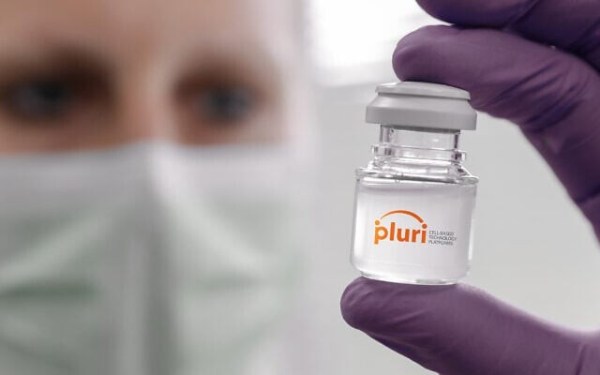
Radiation Emergency Preparedness
Since Chernobyl, the medical community has sought to create and stockpile therapies that can protect citizens in the event of a future nuclear disaster. The most immediate damage from exposure to high levels of ionizing radiation is that it destroys the victim’s bone marrow, causing severe anemia which makes the person vulnerable to infections and bleeding. This condition is called hematopoietic acute radiation syndrome (H-ARS), or just radiation sickness, and leads to death within a few weeks5.
In her talks about the history of cord blood banking, Dr. Eliane Gluckman reminisces that Chernobyl was one of the early motivations for building public banks of cord blood donations6. It was hoped that victims of radiation sickness could be rescued with cord blood transplants. But that plan was fraught with complications. A medical complication is the need to have partial HLA matching between the patients and the cord blood donors. A logistical complication is that cord blood units are located in centralized banks, and it would not be easy to transport, thaw, and infuse the large numbers of units required for a mass casualty event.
Subsequently, in the 2000s researchers at Hadassah Medical Center in Israel developed a treatment that enhances bone marrow regeneration. Their therapy can be used to rescue patients from acute radiation sickness. The company Pluristem was formed to commercialize this therapy, which goes by the product name PLX-R187. Since 2022, the company name has been shortened to Pluri and its stock currently trades on the Nasdaq exchange under the ticker symbol PLUR.
The Pluri product PLX-R18 is a biologic drug made from live placenta cells. It is mostly composed of adherent stromal cells, or in other words they resemble mesenchymal stromal cells from the placenta. These cells have a huge advantage in that they do not require HLA matching and can be given off the shelf to anyone. Pluri has developed a proprietary method of expanding these cells so that a single placenta cell can be multiplied into billions of cells, and one placenta can treat more than 20,000 patients8. Moreover, PLX-R18 can be shipped to the field in small vials. Once the product is thawed, patients are administered the cells as intramuscular injections. All of these factors make PLX-R18 very practical for use as a rescue therapy if a nuclear accident were to cause mass casualties from radiation exposure.
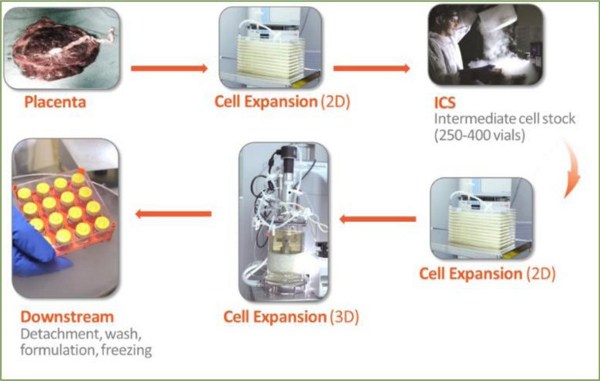
Details of the Pluri PLX-R18 Product
Some details of the Pluri manufacturing process are proprietary, but many papers have been published about the PLX-R18 product development and its efficacy (the references cited are only a partial list)8-15. The starting cells are isolated from the fetal side of a full-term placenta that comes from a healthy Cesarean delivery. The manufacturing process basically has two stages8. Initially the cells are cultured on traditional two-dimensional plates. This creates an intermediate cell stock which is cryopreserved. During the second stage of manufacturing, the intermediate stock is thawed and further expanded in a 3-dimensional bioreactor. The Placental eXpanded (PLX) bioreactor is patented; it provides the cells with “a complex network of extra cellular matrix nanoscale fibers” that allows the cells to grow in more than one layer, mimicking a living organism9. The use of the PLX bioreactor platform is the heart of the Pluri technology and enables them to manufacture 20,000 patient treatments with cells from a single placenta. The final cellular product is cryopreserved in vials.
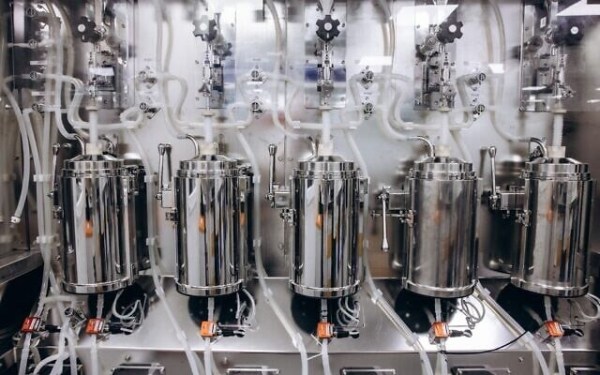
Pluri’s PLX-R18 has been tested in mice, in primates, and in humans10-12. Obviously, it would not be ethical to expose humans to radiation poisoning, so the first-in-human trial recruited patients suffering from graft failure after a stem cell transplant. The human patients that received 4 million cells/kg of PLX-R18 in two injections, a few days apart, had highly significant improvements in their red blood cell count (HGB; p= 0.0019), their platelets (PLT; p=0.000012) and their overall immune system (ANC; p=0.018)12.
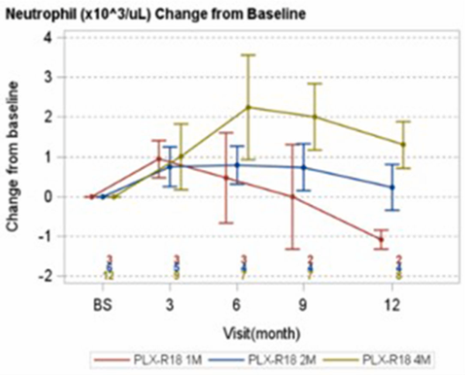 In a research partnership with the US Dept. of Defense, Pluri demonstrated that PLX-R18 also has value as a prophylaxis against radiation exposure. Mice that received their first dose of PLX-R18 a day before lethal radiation exposure had 81% survival, versus 23% of controls11. Based on the clinical trials completed so far, in 2018 the US FDA gave PLX-R18 Orphan Drug designation and approval for emergency use in the event of widespread radiation exposure13,14.
In a research partnership with the US Dept. of Defense, Pluri demonstrated that PLX-R18 also has value as a prophylaxis against radiation exposure. Mice that received their first dose of PLX-R18 a day before lethal radiation exposure had 81% survival, versus 23% of controls11. Based on the clinical trials completed so far, in 2018 the US FDA gave PLX-R18 Orphan Drug designation and approval for emergency use in the event of widespread radiation exposure13,14.
The mechanism of action for PLX-R18 is the indirect promotion of bone marrow recovery without engraftment8. The fetal cells in PLX-R18 secrete multiple proteins that support hematopoietic reconstitution by signaling the bone marrow to make cells. In addition, the PLX-R18 cells also up-regulate the endogenous signaling system of the patient’s own metabolism.
Pluri likes to point out that since PLX-R18 has a multifactorial mechanism of action, it is potentially a multi-organ therapy8. Pluri is collaborating with the medical university of Fukushima, in Japan, on research into the ability of PLX-R18 to protect against the gastrointestinal effects of acute radiation syndrome15. Fukushima was the site of a nuclear reactor meltdown on 11 March 2011, after a magnitude 9 earthquake off the coast of Japan triggered a tsunami which disabled the power supply to the reactor cooling systems16.
Will history repeat itself?
Since Russia invaded Ukraine in February 2022, the nuclear reactors in Ukraine have been in peril. The Zaporizhzhia Nuclear Power Plant, which is the largest in Europe, has been placed into shutdown as fighting swirls around it17. The radioactive remains of the Chernobyl power plant should have been safe. They had been sealed under a steel dome weighing 40,000 tons which was designed to withstand earthquakes, tornadoes, heavy snowfalls, and to last for a century18. But, on 14 February 2025, Russian forces punctured the Chernobyl dome with an explosive drone built in Iran19. The explosion started a fire in the insulation between the inner and outer layers of the dome that smoldered for three weeks. The insulation layer was designed to stay dry to prevent corrosion from moisture, but emergency workers were forced to hose water into the insulation layer to put out the fire. The dome, which was built at a cost of 1.5 billion Euros, now needs extensive repairs18,19. It cannot be ruled out that there may be another nuclear catastrophe that originates in Ukraine but impacts most of Europe.
Partnership of Hemafund and Pluri
On 5 March 2025, the two companies Hemafund and Pluri announced an exclusive collaboration to prepare for a radiation emergency in Ukraine20,21. Pluri will produce and supply a stockpile of PLX-R18 that is sufficient to treat 6,000 people initially (this constitutes 12,000 doses, because each patient receives two injections). Hemafund, which operates a cord blood bank in Kyiv, will be responsible for storage and distribution of the doses. Hemafund has experience picking up cord blood from hospitals across Ukraine despite operating in a war zone, making them uniquely qualified to deliver the radiation therapy in case of need. Hemafund and Pluri will also collaborate on late-stage clinical trials of PLX-R18. Pluri hopes to achieve market approvals for PLX-R18 and to have their product purchased for the US Strategic National Stockpile22. According to the Times of Israel, the collaboration could potentially generate $100 million in value for Hemafund and Pluri21.
We have learned from the history of Chernobyl that when a nuclear accident happens in Ukraine, the consequences do not stay in Ukraine. If a nuclear reactor explodes, the radioactive fall-out will affect millions of people across Europe. Hence, the collaboration between Hemafund and Pluri is important for the entire continent.
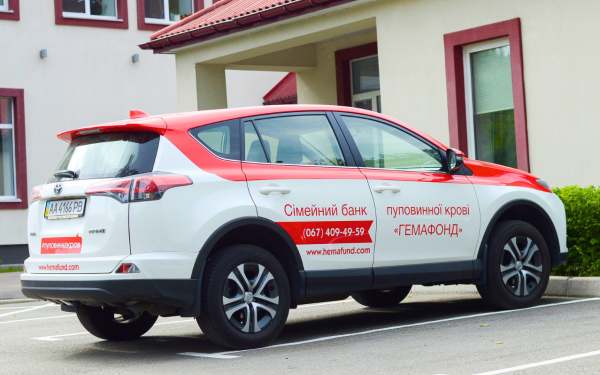
References
- Gray R. The true toll of the Chernobyl disaster. BBC. Published 2019-07-25
- Brown K. Manual for Survival - A Chernobyl Guide to the Future. London: Penguin Books Ltd., 2019
- International Atomic Energy Agency (IAEA). Frequently Asked Chernobyl Questions. Resources. Accessed 2025-04-01
- O’Connell M. Why Would Anyone Want to Visit Chernobyl? New York Times. Published 2020-03-24
- Cleveland Clinic. Radiation Sickness. Health Library. Last updated 2024-06-11
- Verter F. Cord Blood Community Events 2025. Parent's Guide to Cord Blood Foundation Newsletter Published 2025-04
- Pluri Inc. Wikipedia
- Sher N, Ofir R. Placenta-Derived Adherent Stromal Cell Therapy for Hematopoietic Disorders: A Case Study of PLX-R18. Cell Transplantation. 2018; 27(1):140-150.
- Meiron M, Toren A, Ofir R, Drori-Carmi N. Adherent cells from placenta tissue and use thereof in therapy. US Patents. Granted 2013-09-03
- Sher N, Prezma T, Fuchs-Telem D, Shraga-Heled N, Authier S, Chang P, Ascah A, Bakke J, Gahagen J, Ofir R. Intramuscular Administration of Placenta-Derived Stromal Cells Enhances Survival of Rhesus Macaque Monkeys Exposed to Total Body Irradiation. Blood. 2017; 130(S1):3784.
- Kumar VP, Biswas S, Holmes-Hampton GP, Sheleg M, Stone S, Legesse B, Ofir R, Ghosh SP. Pre-Administration of PLX-R18 Cells Protects Mice from Radiation-Induced Hematopoietic Failure and Lethality. Genes 2022; 13:1756.
- Lazarus HM, McGuirk JP, Zuckerman T, Metheny L, Pineiro L, Litzow MR, Rowley SD, Avni B, Tamari R, Sheleg M, Rothenstein D, Halevy N, Rowe JM. PLX-R18 (Avoplacel), a Placental Expanded Mesenchymal-like Stromal Cell Therapy Shows Favorable Safety and Appears to Improve Incomplete Hematopoietic Recovery after Hematopoietic Cell Transplantation (HCT). Blood. 2022; 140(S1):10447–10448.
- Pluri. U.S. FDA Clears Pluristem’s IND to Treat Victims Exposed to Acute Radiation. Press Release. Published 2018-04-30
- Pluri. Pluristem Therapeutics Announces FDA Orphan Drug Designation for PLX cell therapy for the Treatment of Graft Failure and Incomplete Recovery Following Hematopoietic Cell Transplantation. Press Release. Published 2018-09-25
- Soeda Y, Ofir R, Sher N, Suzuki Y, Aberman Z, Inano A. PLX-R18- Placenta-derived Mesenchymal-like Stromal Cells are efficacious in reducing lethality in Gastrointestinal Acute Radiation Syndrome (GI-ARS) Mouse Model. 18th World Congress of Basic and Clinical Pharmacology. 2018; Poster
- World Nuclear Association. Fukushima Daiichi Accident. Information Library. Last updated 2024-04-29
- World Nuclear Association. Ukraine: Russia-Ukraine War and Nuclear Energy. Information Library. Last updated 2025-04-01
- Associated Press. Ukraine: Chernobyl's Radioactive Dust Shelter Unveiled. Voice of America. Published 2019-07-10
- Barker K. How a Cheap Drone Punctured Chernobyl’s 40,000-Ton Shield. New York Times. Published 2025-03-25
- Pluri. Pluri Announces Exclusive Collaboration Agreement with Hemafund to Enhance Ukraine's Radiation Emergency Preparedness. Yahoo! Finance. Published 2025-03-05
- Wrobel S. In case of a nuclear event, Ukraine to use Israeli placenta-based emergency treatment. Times of Israel. Published 2025-04-20
- US Government Accountability Office (GAO). Public Health Preparedness: HHS Should Address Strategic National Stockpile Coordination Challenges. Testimony to Congress. Published 2024-05-02

